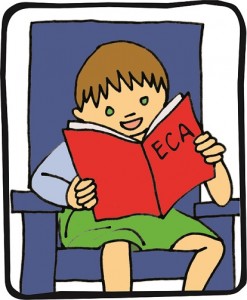The Child and Adolescent Statute was created in Brazil on July 13, 1990. Its objective is to ensure complete assistance to children from before their birth. Previously, what existed in the country was a law called the Code of Minors. It dealt with children and adolescents in irregular situations – such as orphans, street people and offenders -, who it considered a problem for society.
With the creation of the ECA, children and adolescents began to be seen, not as “minors,” but as young citizens, with rights and obligations. According to the law, all children (under 12 years of age) and adolescents (from 12 to 18 years of age) must attend school, but they also need free time and conditions for playing. Therefore, they should have access to sports, culture and recreational centers.
For Adriana Brito, clinical and social psychologist and Criança é Vida (Child is Life) Institute master teacher, another major advance of the ECA in relation to the Code of Minors was to consider the removal of children from their families a last resort in cases where children run some risk or in cases of adolescents who commit violations. “Working with families also became a priority, considering that removing children from their family environment is another form of violence they must deal with,” says Adriana.
An important development based on the ECA was the creation of Law 11942/2009 that ensures minimum conditions of assistance for incarcerated mothers and their newborns, with medical assistance, primarily in the prenatal and postpartum periods, extended to their babies. The law also requires women’s penal institutions to have a nursery so that mothers can nurse their babies for at least six months.
For the Criança é Vida (Child is Life) Institute, which has been working to promote the healthy and complete development of children for almost 20 years, the statute is a milestone in the way of thinking about children and adolescents and the responsibility of adults to these developing individuals. “We are an enormous country, with major challenges. Our society also does not prioritize children and education as it should. The ECA has the great advantage of clarifying what is right and what is wrong, but we are light years from the ideal. We at the Criança é Vida (Child is Life) Institute are trying to do our part, day after day, working to prevent violence, for sex education, to build affective bonds and for many other things that help children have better physical, emotional and social health,” says Regina Stella Schwandner, Managing Director of the Institute.
Some of the rights guaranteed by the ECA are listed below. Issues such as child labor, the right to education, operation of the Guardianship Councils and measures in cases of criminal acts are also addressed by the law. To see the complete document, there are several simplified versions, that are easy to read and accessible even for children, such as that proposed by writer Maurício de Souza, creator of the Turma da Mônica (Monica’s Gang).
He made a comic book with fun and simple language on the ECA. The comic book can be downloaded free of charge from the Unicef Brasil website. Just go to:
http://www.unicef.org/brazil/pt/multimedia_14792.htm.
- The ECA ensures complete assistance to children from before their birth.
- Public hospitals should ensure that all pregnant women receive exams before and after the birth of their babies and have complete monitoring during their pregnancies.
- The government should ensure food support for pregnant and nursing women, if necessary.
- The identification of newborns in hospitals is guaranteed by law.
- Special assistance in the case of babies with special needs should be guaranteed by the government.
- Hospitalization of the mother (ward or room) should, ideally, be together with the baby so that it remains at her side while both are in the hospital.
- Vaccination of the child is mandatory and should be monitored by the government and competent agencies.
- Children or adolescents who need hospitalization have the right to full-time accompaniment of a responsible adult while they are in a hospital.
- If health professionals, in public or private hospitals, learn of or suspect that a child is a victim of mistreatment, they are required to report it to one of the competent agencies.
- It is important to be aware that these rights are ensured by law and should be demanded by all.
